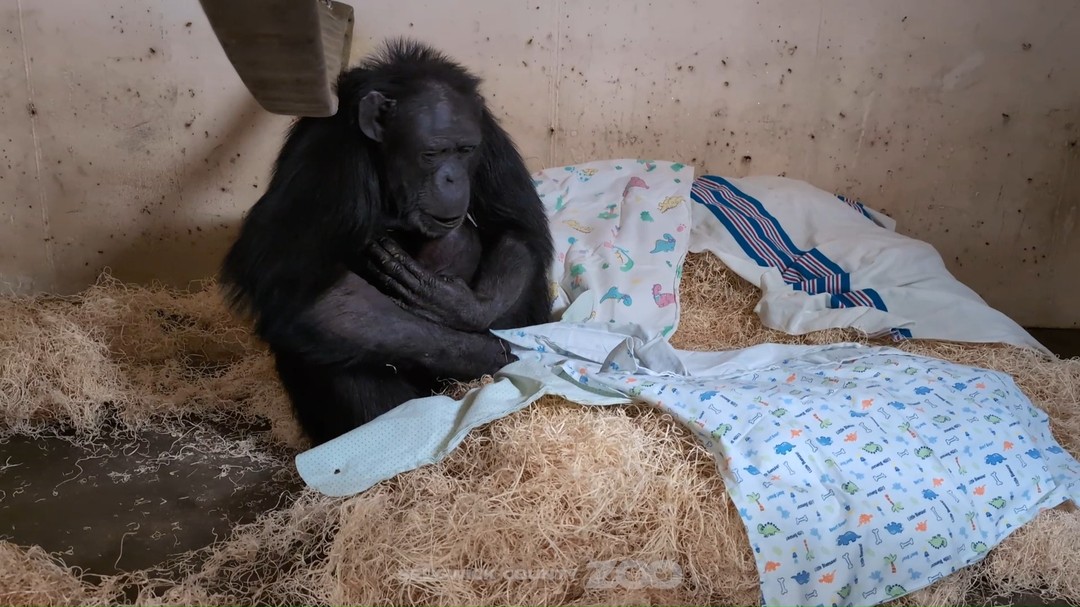- The successful birth of Kyansa, a chimpanzee born via a planned C-section, as an exciting milestone in the conservation of chimpanzee populations.
- The importance of C-section deliveries in chimpanzees, addressing risks associated with natural births following previous surgical deliveries.
- Mahale’s journey, with compassionate care and observation from veterinary and animal care teams to promote health and bonding after delivery.
- The significance of Mahale’s offspring for the genetic diversity and continuity of chimpanzee populations in zoos.
- An overview of the roles that zoos and wildlife conservationists play in the protection and preservation of chimpanzees and overall species conservation.
The arrival of Kyansa, Mahale’s newborn baby girl, marks a significant achievement in the conservation landscape of chimpanzees. Born on April 7, via a meticulously planned C-section, her birth carries both excitement and importance for the chimpanzee population. This event highlights the dedication of zoologists and conservationists seeking to protect these remarkable creatures and ensuring their survival amidst challenges that endanger their existence. It is a testament to the strides made in understanding and applying veterinary medicine to wildlife care.
Kyansa’s birth introduces a fresh chapter of joy and responsibility. The decision to opt for a C-section, due to Mahale’s prior surgical delivery, underscores the critical role that veterinary care plays in wildlife management. Given the unpredictability and potential risks associated with natural births following a C-section, this approach greatly mitigates the possibility of complications, offering a safer alternative for both mother and offspring.
Conducting a planned cesarean section in chimpanzees is a sophisticated procedure necessitating a streamlined collaboration between veterinarians and human obstetricians. For this delivery, Drs. Laura Whisler and Janna Chibry of College Hill OB-GYN collaborated closely with the zoo’s veterinary team. This cooperative effort highlights the intersection of human medical expertise and veterinary science, underscoring how such partnerships are crucial in advancing wildlife healthcare.
The first hours following Kyansa’s birth were pivotal. Mahale, attentive and recovering, demonstrated immediate signs of maternal bonding. Observations by caretakers revealed positive interactions and nurturing behaviors, synonymous with a healthy mother-infant relationship, vital for Kyansa’s social and psychological development. These initial encounters between mother and child are irreplaceable, laying a foundation for a lifelong bond.
However, the nurturing and medical aspects extend beyond the primary focus on Mahale and Kyansa. The sisterly presence emphasizes the genetic diversity maintained within conservation programs where breeding decisions are taken seriously. This birth contributes to a managed population of chimpanzees, ensuring a healthy balance of genetic representation necessary for long-term species viability.
Zoos play an essential role in protecting and preserving endangered species. They provide safe environments replicating natural habitats while focusing on species-specific care regimens. Such endeavors are buttressed by detailed research into the biology, behavior, and health management of animals like chimpanzees. The birth of Kyansa is a success story emerging from these concerted efforts in conservation, offering insights into the broader implications for the species.
The welfare of chimpanzees is a critical element in global efforts toward conservation. With threats like habitat destruction and illegal wildlife trade looming large, every birth offers renewed hope for sustainable populations. Conservation professionals are constantly innovating strategies to bolster the status of these animals both in the wild and within controlled environments. These initiatives provide species like chimpanzees opportunities for future generations by maintaining their presence in the world’s biodiversity spectrum.
As the story of Mahale and Kyansa continues to unfold, it’s a gentle reminder of the dedication and care required to safeguard our planet’s precious wildlife. The lessons from Kyansa’s birth highlight the enduring commitment of zoos and conservationists who strive to protect species diversity and encourage public awareness and education regarding the importance of conservation efforts worldwide.
The journey of Mahale and her newborn serves as an inspiring narrative in the annals of wildlife conservation. It is a celebration of life, hope, and the ongoing pursuit of a world where humans and nature can peacefully coexist. As we journey alongside Mahale and Kyansa, the hope is not only to witness their growth but to embrace the responsibility that comes with ensuring a vibrant future for all primates.
*****
Source Description
Exciting birth announcement – but not the one you’re expecting! Yesterday, April 7, chimpanzee Mahale welcomed a healthy baby girl, via a planned C-section.
Just over two years ago, you shared our excitement as we watched Mahale reuniting with Kucheza following his emergency C-section birth. Fans, both new and old, joined us on the journey of mom and son until Kucheza passed away due to an accidental injury at just five weeks old.
Now, we are thrilled to share the news that after a healthy pregnancy, Mahale has successfully delivered another baby – and this time it’s a girl! 🎉 The baby was named Kyansa (key-AHN-sah), after a peak in the Mahale Mountains National Park in Tanzania.
Because she had previously delivered an infant via C-section, another surgical delivery was prescribed to reduce the risks sometimes associated with natural births after C-sections. Once again, Drs. Laura Whisler and Janna Chibry of College Hill OB-GYN performed the cesarean section alongside our veterinary and animal care teams.
Mahale spent the night recovering and was able to be reunited with baby this morning – just 14 hours after delivery. Positive signs of bonding have been immediately visible through constant observation by their caretakers. The pair will remain behind the scenes to allow time for Mahale to heal from surgery and for mom and baby to develop their bond.
This is the fourth offspring for Mahale, and an important birth for the chimpanzee population.
Follow us to watch their story unfold. We can’t wait to take you on this journey with us. 🧡


